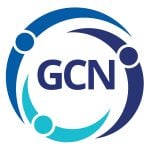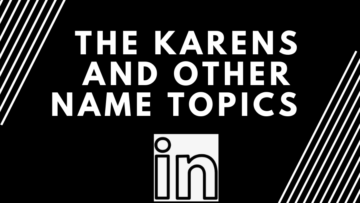Minimizing age discrimination on LinkedIn can be challenging, but there are some strategies you can employ to present yourself positively and focus on your skills and experiences.
You may want to know the difference between ageism and age discrimination.
Ageism refers to discriminatory attitudes, stereotypes, and discrimination based on a person’s age, whether young or old. It involves treating individuals differently or making assumptions about their abilities, value, or worth solely because of their age.
On the other hand, age discrimination refers explicitly to the unfair treatment, exclusion, or disadvantage experienced by an individual due to their age, which can manifest in various areas, such as employment, healthcare, or social opportunities.
Both ageism and age discrimination perpetuate harmful biases and hinder the creation of inclusive societies.
According to the EEOC, the “Age Discrimination in Employment Act (ADEA) forbids age discrimination against people who are age 40 or older.”
Here are some tips below to minimize age discrimination on LinkedIn.
Use a professional photo: Choose a professional-looking photo that portrays you positively. Display the hair color that makes you feel the most confident and comfortable.
Ditch the parentheses around the area code in your Contact Info section: Parentheses were previously used to separate the phone number, as it was not always necessary to make the call, but an area code is almost always required now. When there are dashes or dots between the sets of numbers, someone can easily tap to make a call, and it is a more modern way of displaying a phone number.
Focus on skills and achievements: Emphasize your skills, accomplishments, and the value you bring to the table rather than focusing on your years of experience. Highlight specific projects you’ve worked on and their outcomes.
Limit the number of past job experiences: Include relevant work experiences in your profile, but there’s no need to list every job you’ve ever had unless you want to. Focus on recent and most relevant experiences.
Keep your profile current: Ensure your LinkedIn profile is up-to-date with your latest skills and achievements. These updates can demonstrate that you’re actively engaged in your profession.
Avoid listing graduation years: While education is essential, avoid mentioning the exact years you graduated from schools if possible. Focus on the degrees and certifications you’ve earned.
Leave out outdated technologies: Highlight your proficiency in current technologies and industry trends. Omit older technologies that may indicate your age.
Use a modern email: Do not use an AOL or Hotmail email address. Instead, get a Gmail address that sounds professional.
Optimize your profile for the job you want: Tailor your profile to the specific roles you’re interested in. Use keywords relevant to your desired position to improve your chances of being found by recruiters. Focus on your future forward position.
Join relevant LinkedIn groups: Engage in groups related to your field of interest. Participating in discussions and sharing valuable insights can help you showcase your expertise and network with like-minded professionals.
Build a strong network: Connect with colleagues, industry peers, and potential employers. A robust network can help you establish relationships and access job opportunities. Maybe you have heard that up to 80% of jobs are found via networking.
Be mindful of language: Use contemporary language and avoid outdated phrases or terms.
Demonstrate continuous learning: Highlight any recent training or certifications you’ve obtained to show your commitment to staying current in your field.
Consider skills-based endorsements and recommendations: Request endorsements and recommendations from colleagues who can vouch for your skills and work ethic rather than your age or experience.
Craft a compelling summary in the About section: Write a summary that showcases your passion for your profession and your eagerness to contribute rather than focusing on past years of experience. Don’t write a wall of paragraphs. Add some emojis and show how you are relatable and likable, Don’t write a boring third-person BIO.
Remember, age discrimination is, unfortunately, something that can occur. Still, by presenting yourself in a positive and value-driven manner, you can help mitigate its impact and focus on showcasing the best of your professional self.
NEXT STEPS
- Subscribe to my newsletter on LinkedIn for bright ideas to manage your career.
- Join as a member at https://greatcareers.org/membership of the #1 business networking association on the Philadelphia Business Journal’s Book of Lists three years in a row!
- If you need a resume or LinkedIn profile to get you to your next step, book a call to chat!
- Follow #GreatCareersPHL
AUTHOR BIO
Lynne M. Williams is the Executive Director of the Great Careers Network, a volunteer-run 501(c)3 nonprofit organization that provides career development and networking connections for 1) job seekers in career transition, including veterans, and 2) employed and self-employed for career management.
Aside from writing keyword-focused content for ATS resumes and LinkedIn profiles, Lynne is currently writing her doctoral dissertation on LinkedIn for Job Seekers. She is a contributing author on “Applying to Positions” in Find Your Fit: A Practical Guide to Landing the Job You Love, along with the late Dick Bolles, the author of What Color is Your Parachute?, and is also a speaker on career topics.
This article is also published on: vista.today, montco.today, delco.today, bucksco.today, and in the author’s LinkedIn newsletter. A list of articles can also be found in a Google doc.




